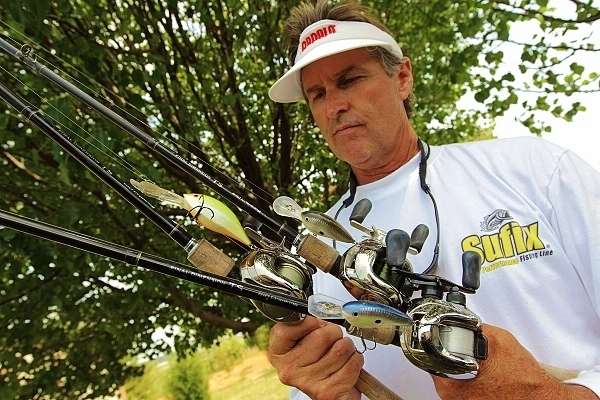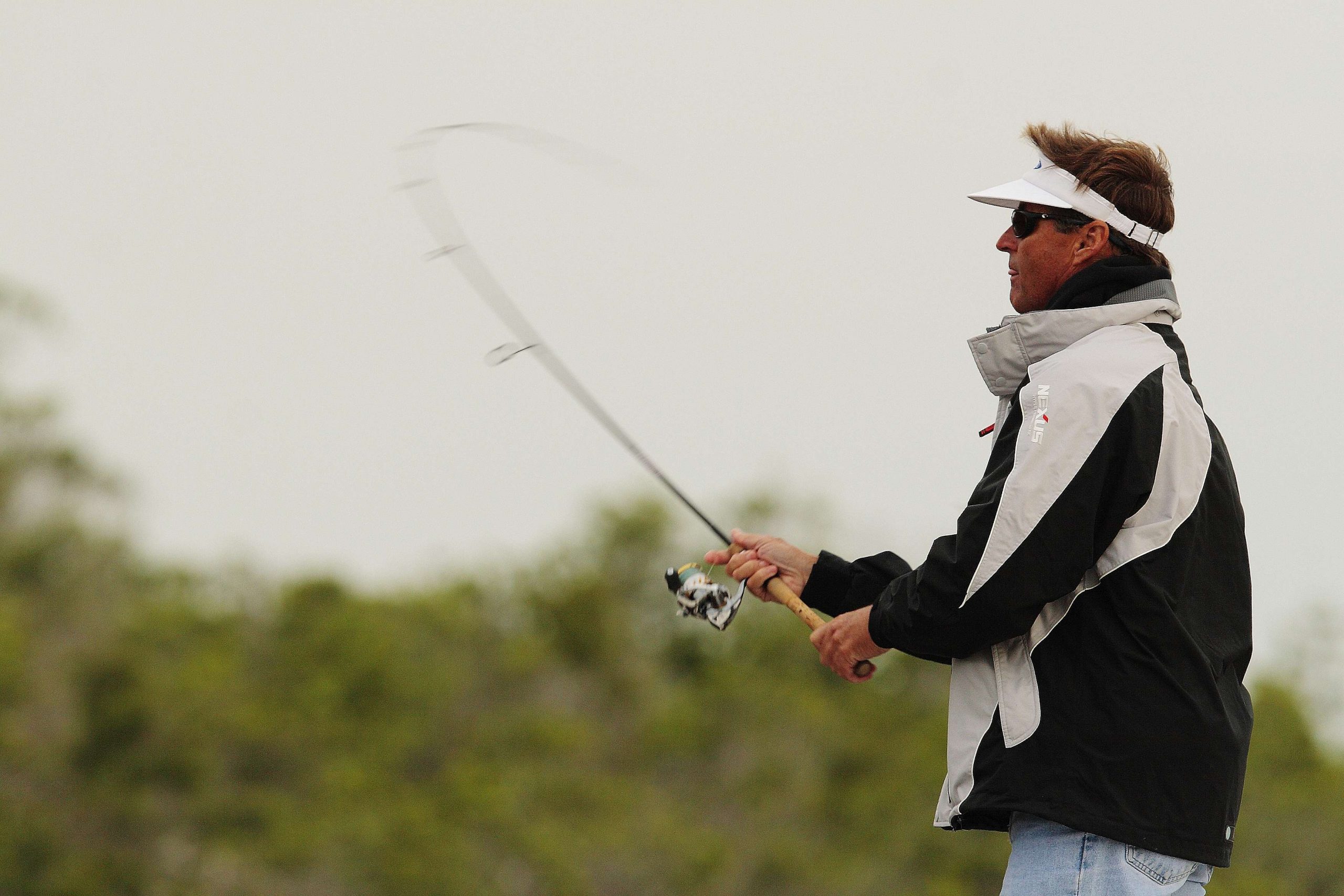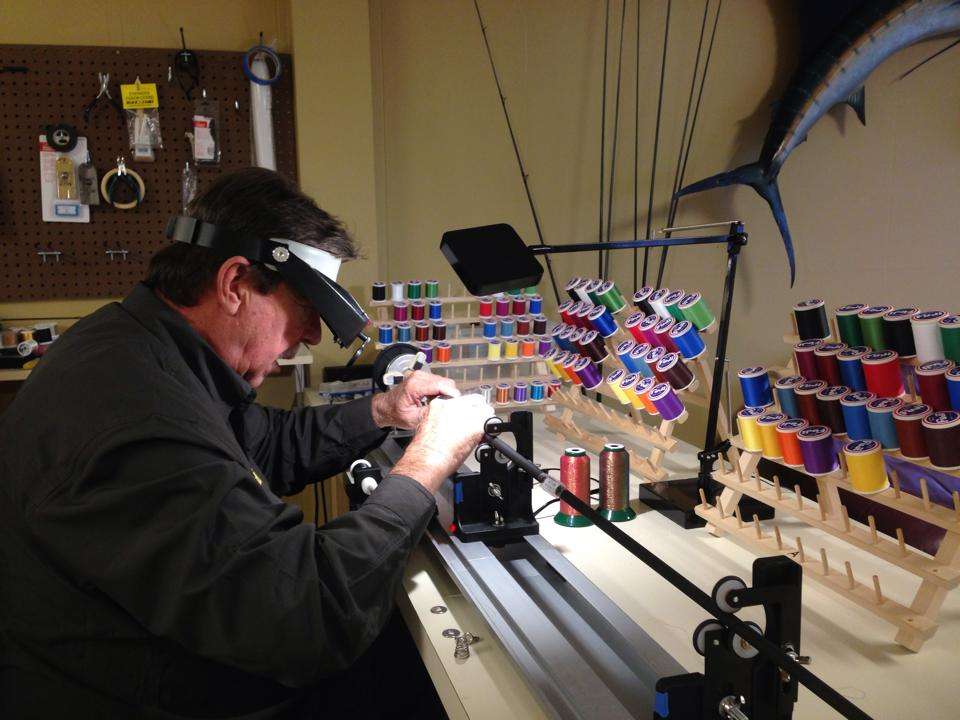
All of us have rods we like and some we don’t — even a few we hate but hang onto simply because we’ve been told how good they are for certain applications.
In my case, that would be rods made specifically for Alabama rigs — a style of fishing now banned from competition in B.A.S.S. events.
What makes it worse is the fact that these “specialty” rods cost a lot of money. To have them collecting dust in a corner of the garage makes no sense.
In an effort to avoid these mistakes, I now use a more common-sense approach when selecting rods. And part of that includes choosing rod blanks that have a broader application, such as one that will work equally well for spinnerbaits, buzzbaits or bladed jigs, etc.
Before choosing a new rod — for any application — it’s important to know a little more about blank dynamics.
Things to Consider
We’re all familiar with the phrase “high modulus.” It’s been pounded into us by every rod manufacturer out there, for years.
The truth is, nearly all of today’s graphite and carbon fiber rods are made from high modulus material. What isn’t discussed, however, is the amount of “energy” these rods store and are capable of delivering. And according to Anglers Resource marketing guru, Jim Ising, “In the final analysis, that’s what matters most.”
“Simply put, when a fishing rod is bent, the fibers are straining to return to a more relaxed position — to their original alignment,” claims Ising. “The amount of strain created when the rod is bent translates to energy stored. And it’s this energy that helps us cast and play hooked fish.”
Anglers Resource (AR) is the company that distributes Fuji rod components throughout North America. Besides handling their marketing needs, Ising is integrally involved in product development. Part of that includes AR’s Point Blank initiative — a line of ultra-light weight, yet powerful rod blanks.
According to Ising, the amount of energy a blank stores can work for or against us.
He says it all comes down to blank selection. For instance, do you need a medium-action rod with a fast tip or one with a slower tip? Ising believes you should ask yourself those questions before ever buying. And it would help to consider what line class and lure weight you intend to use on any given rod.
To further convey the ratio of strength to stored energy, he says this: “A heavy-duty flipping stick will strain much harder in an effort to return to its relaxed, original aligned position than will a light-action spinning rod, and, thus, it stores considerably more energy. That energy is essential when trying to winch big fish from ultra-thick cover. Conversely, an ultra-light spinning rod doesn’t store much energy, which makes it better for playing fish on light line with tiny hooks. The point is, there’s a tradeoff.”
In simpler terms, stored energy equates to “power.” And it’s this power that helps us with casting accuracy and distance as well as playing fish.
Things to Look For
Naturally, we all want to fish with lighter rods. They’re easier to cast and much less fatiguing. They’re more sensitive too.

Recognizing this, rod companies are constantly working to lighten the materials used in rod construction — not just their blanks, but other components, too. Reel seats, grips and guides are all lighter now because the consumer wants a lighter feeling rod, regardless of the application.
So the “magic” formula these days, it seems, is this: The ideal rod is super lightweight, yet it stores plenty of energy.
Well, yes and no.
While I agree that lighter-feeling rods are more pleasurable to fish with, there are a few applications where a heavier blank can deliver a more desirable action to a lure. For example, if I want to maximize the distance a jerkbait travels from side to side with each pull, I rely on a slower, medium-action rod with a heavy tip. The heavier tip prevents the rod from recovering too quickly, which in turn allows the lure to travel further with each glide.
A fast-tip rod will prevent this. And I can’t begin to tell you how many bass I’ve caught by exaggerating the side-to-side movement of jerkbaits.
Another application for slower, heavier blanks would be when throwing crankbaits. A slower recovery in the rod tip will enable the fish to better connect with the lure. That’s not to say there aren’t times for a fast-tip cranking rod. There are — such as ripping a lipless lure through stranding grass. It’s just that a slower tip will usually allow a fish to engulf the lure better.
Ising adds this: “We sometimes hear the phrase ‘stiffness to weight ratio.’ That simply refers to the blank’s rigidity compared to its overall weight or ‘feel.’”
Considering the tendency of today’s rod builders to employ super lightweight, materials, blanks have become inherently stiffer as a result. The reason is this; the lighter carbon fibers become (the higher their modulus), the stiffer they are. And, subsequently, the stiffer they are the faster they return to a relaxed position. That’s called “recovery.”
Using high-energy rods with less recovery time can make casting almost effortless. Less motion is required, and that translates to less energy expended by the caster. Which means less fatigue by the end of the day. That can be good.
When are stiffer blanks better?
When I’m skipping docks, I want a blank that’s lightweight, powerful and extremely sensitive — regardless of whether it’s a casting or spinning rod.
Oftentimes, I’m presenting the lure in tight quarters, and I may need it to travel a good distance. So, a blank that stores plenty of energy will allow me to force the lure’s trajectory in a desired direction and speed. And I can facilitate this with a fore or backhand approach, so there’s really no bad angle.
Pitching is another situation where a stiffer blank can pay off. Having plenty of stored power helps to deliver the lure accurately at a distance with minimal effort, and that also helps to lessen fatigue over a long day. Plus, I have added sensitivity that’s useful in detecting subtle bites in and around denser targets.
One thing Ising and I both agree on is that when you’re choosing a new rod, worry less about manufacturer hype. Consider more the application or the techniques you want it for, then factor in line and lure weight and whether a higher-modulus blank is right for your needs.
Do this and you’ll have fewer mistakes collecting dust in the corner of your garage.


